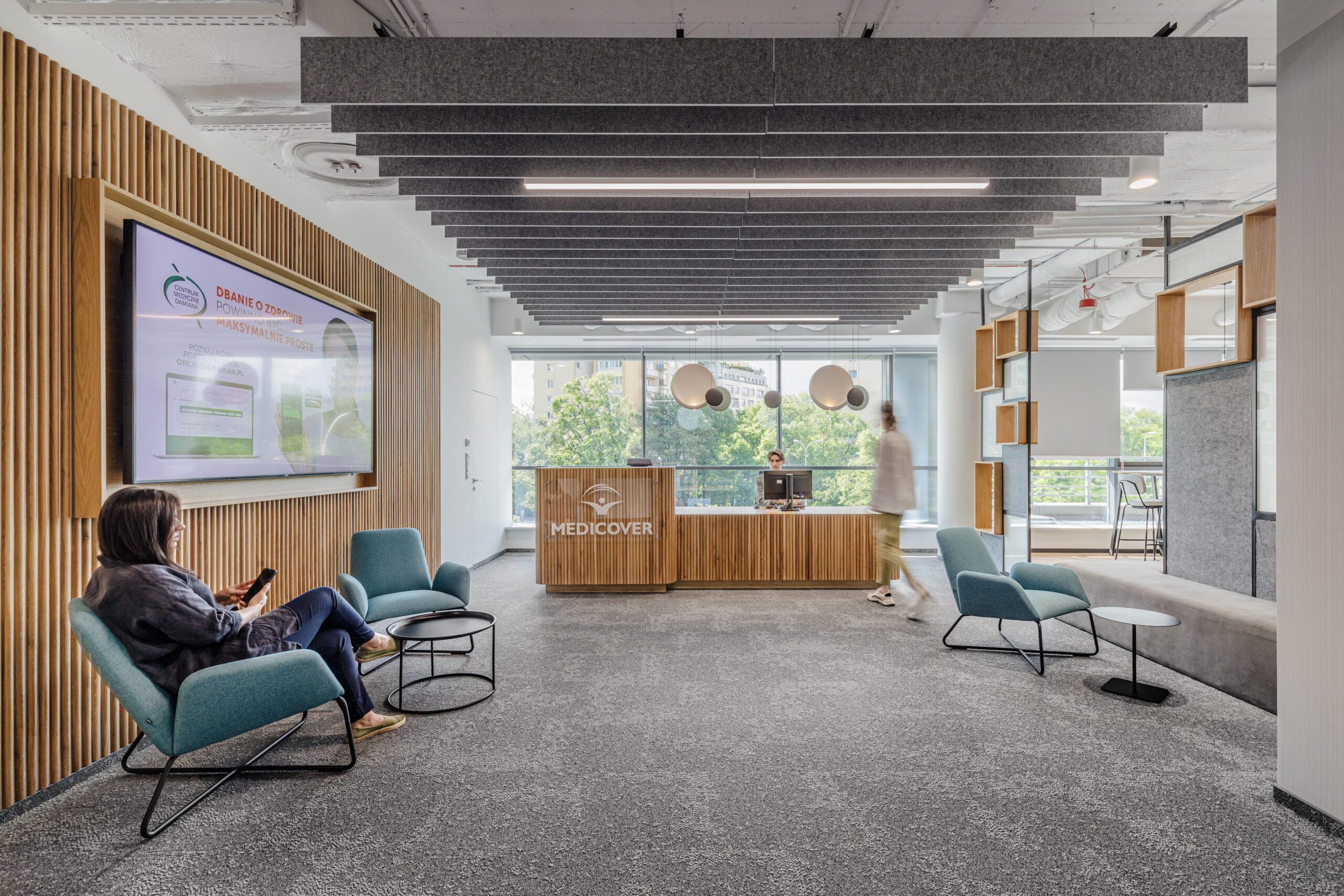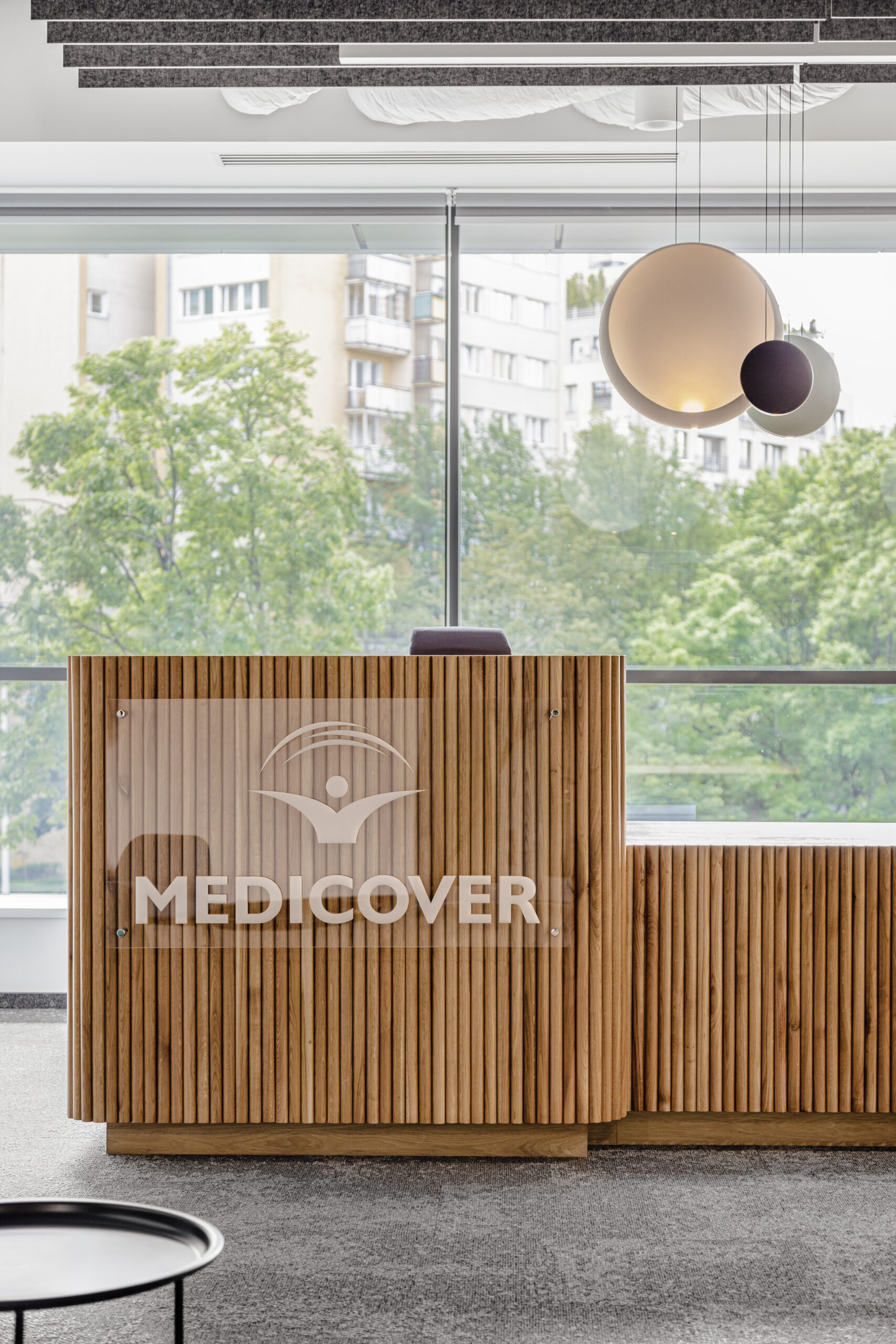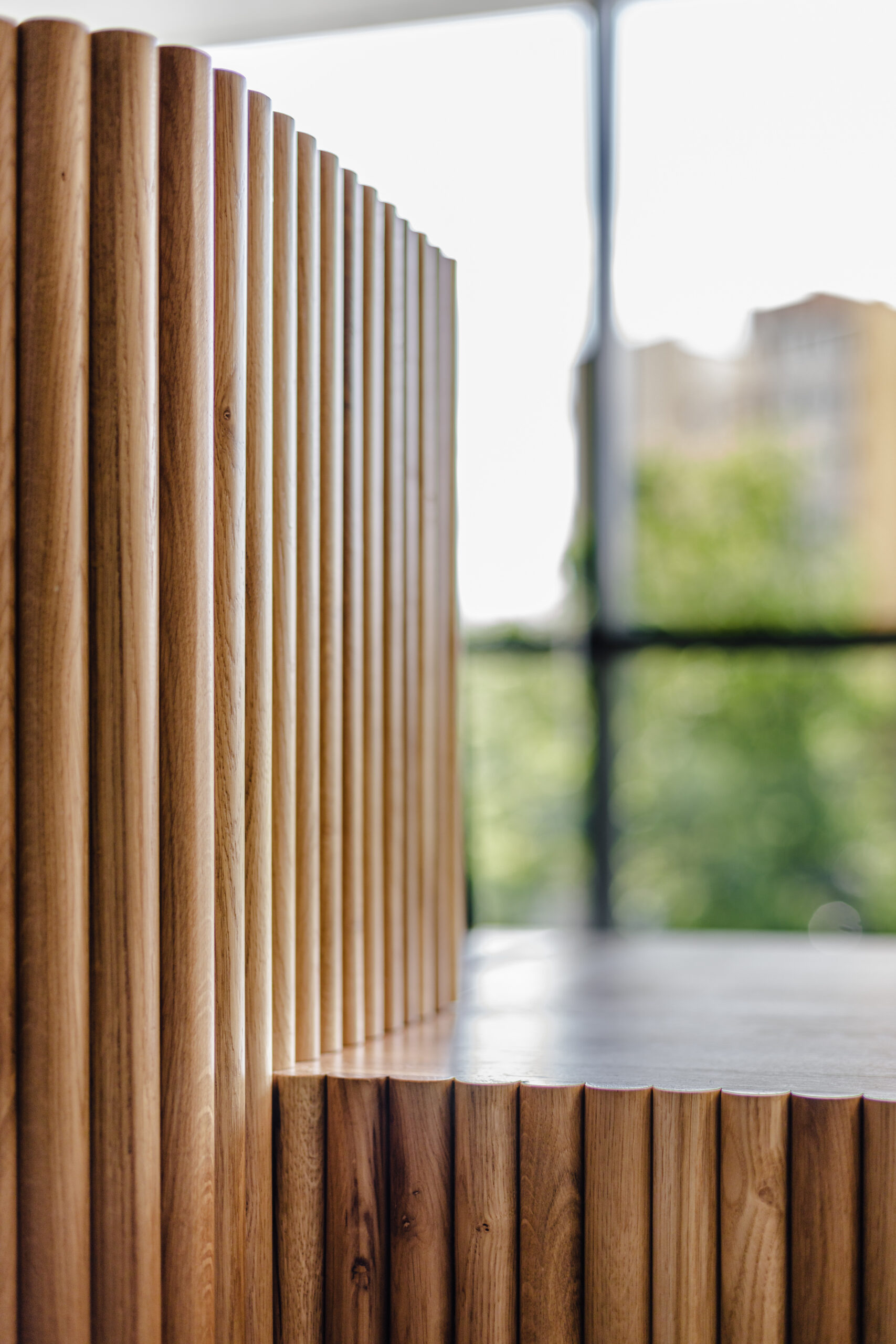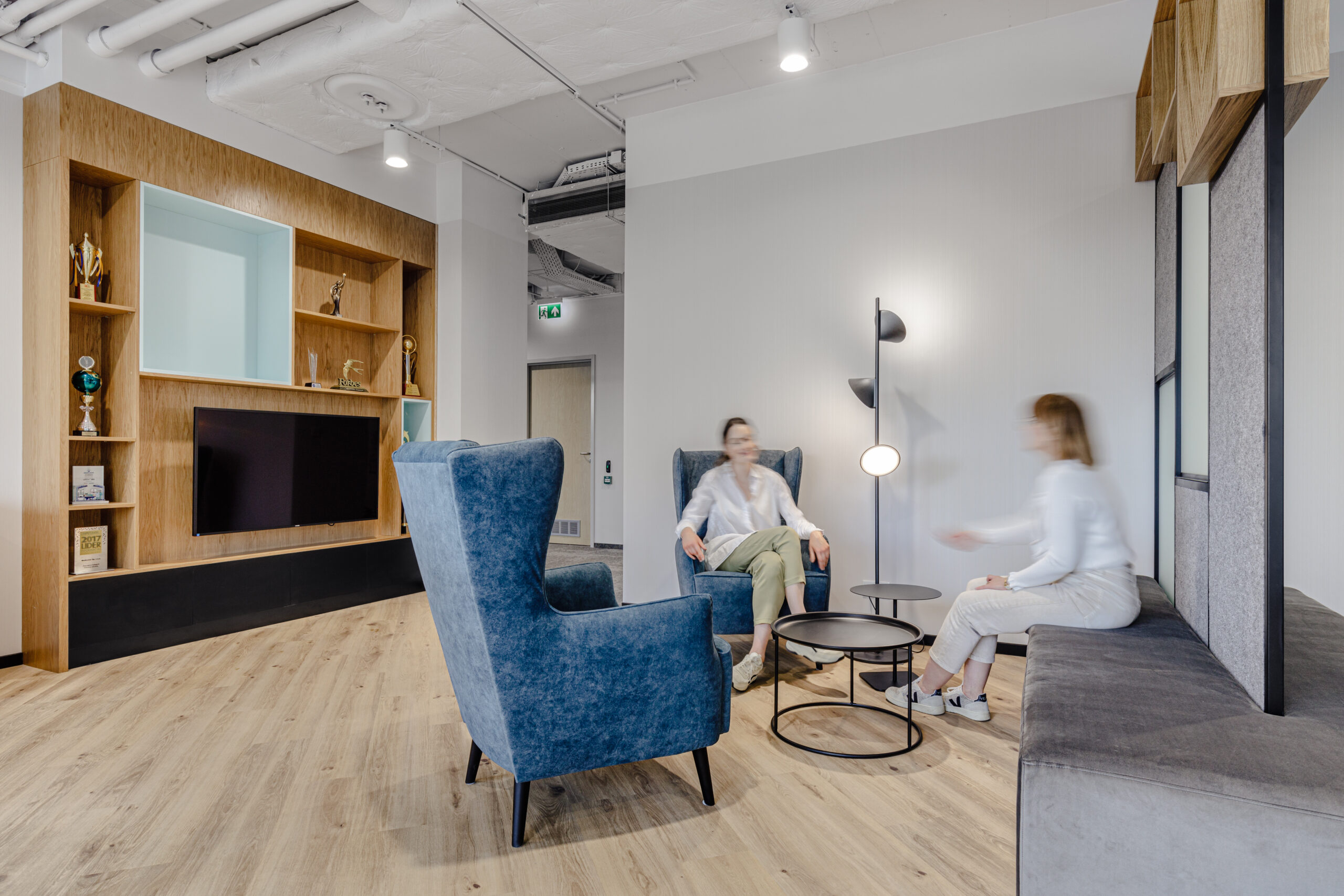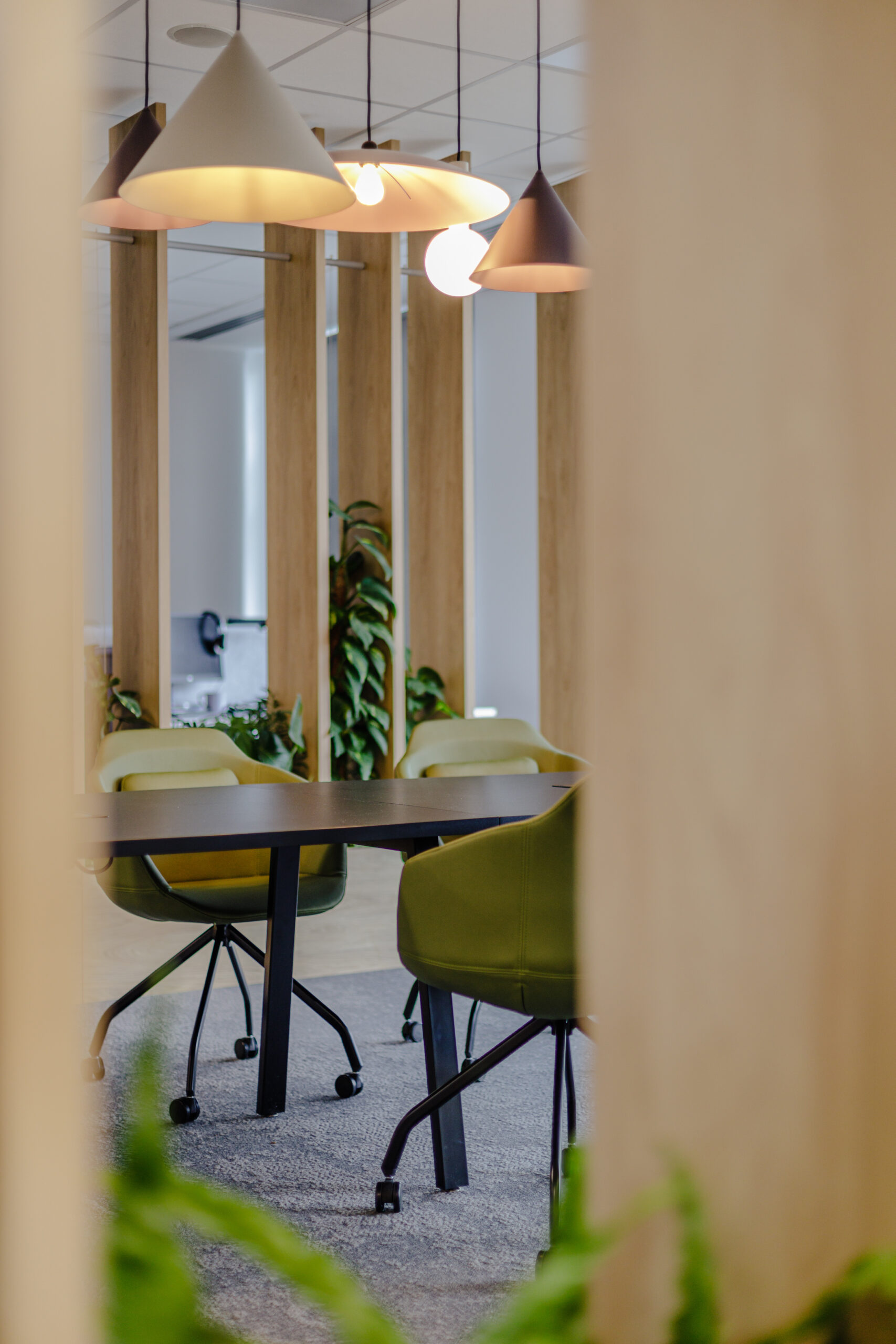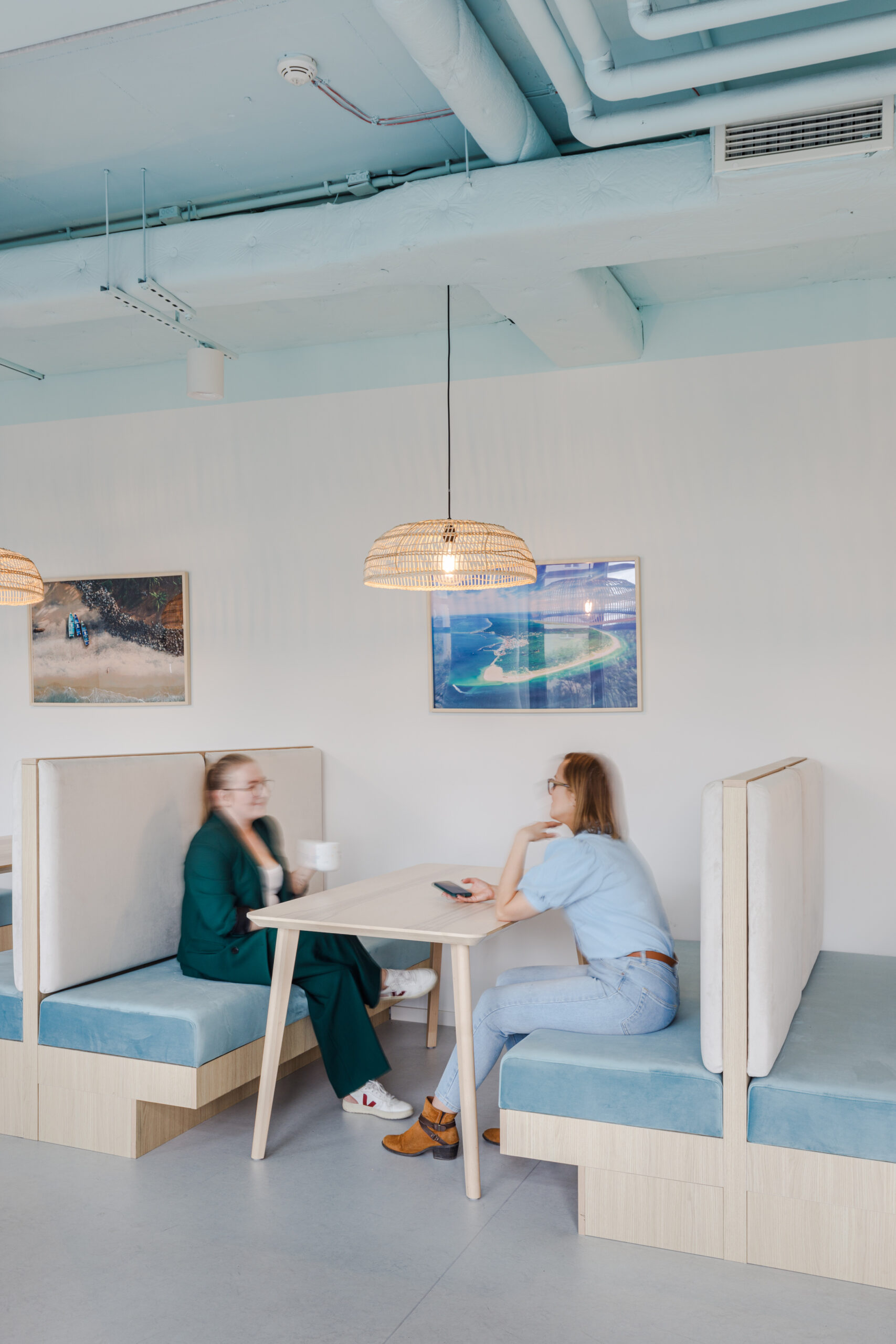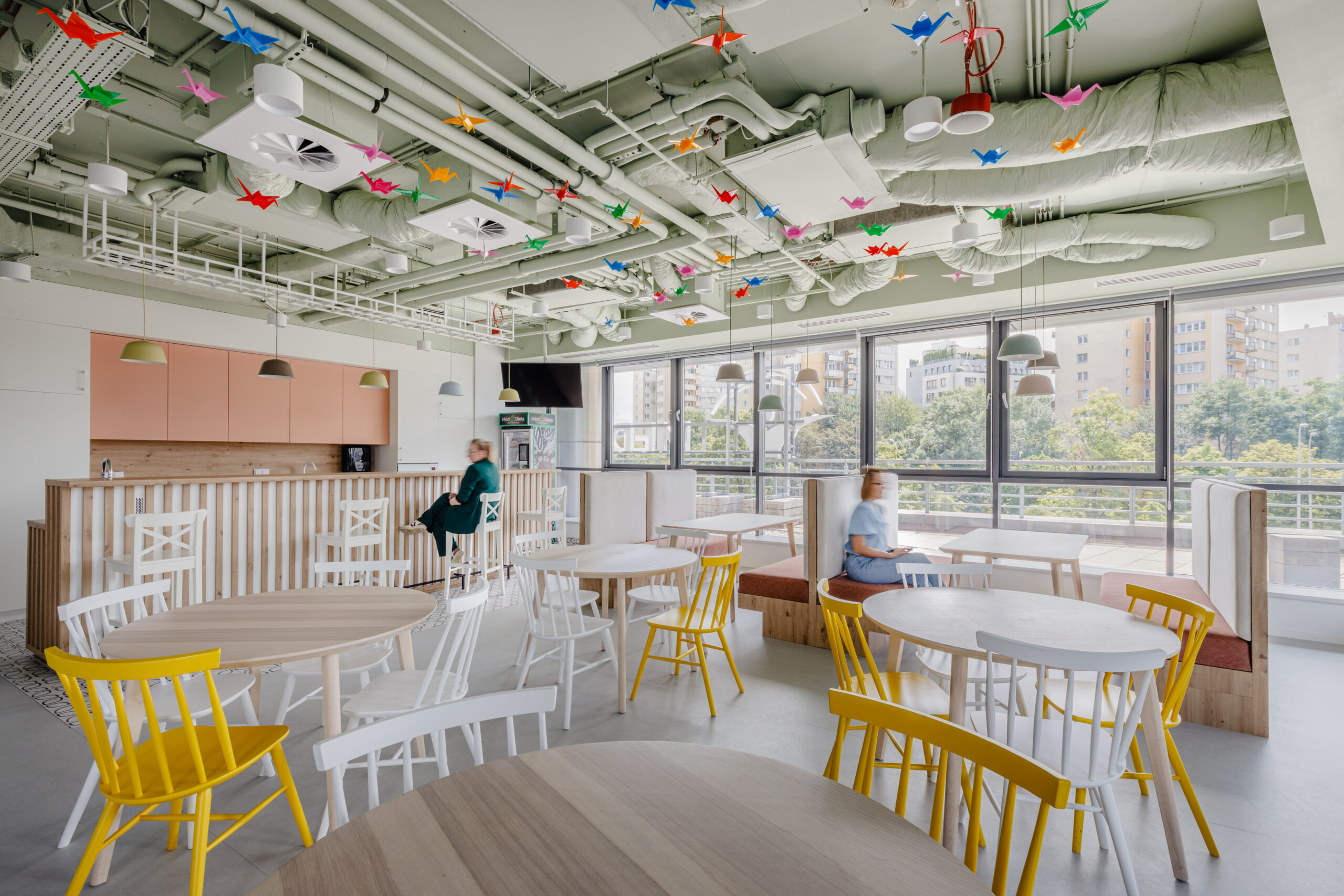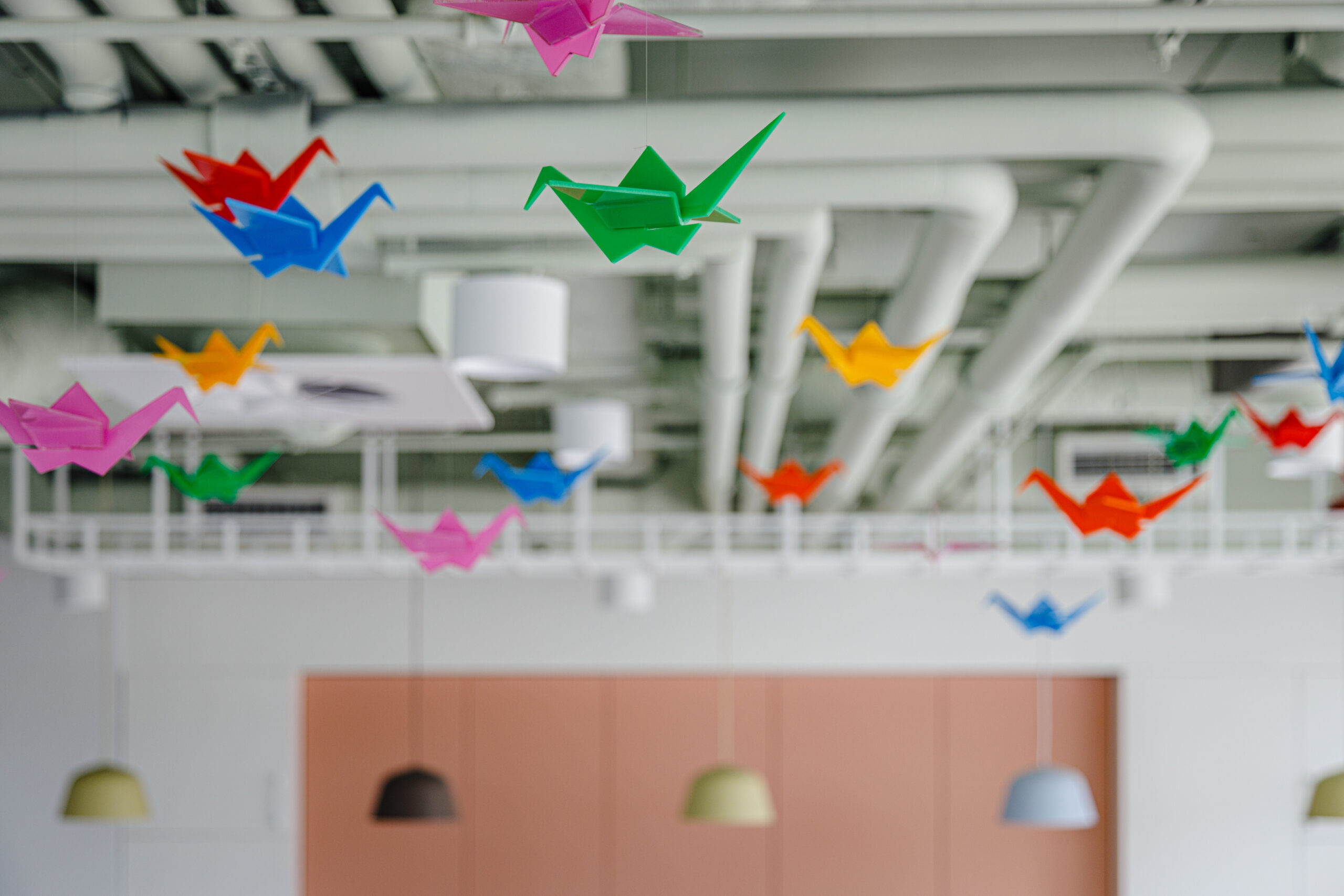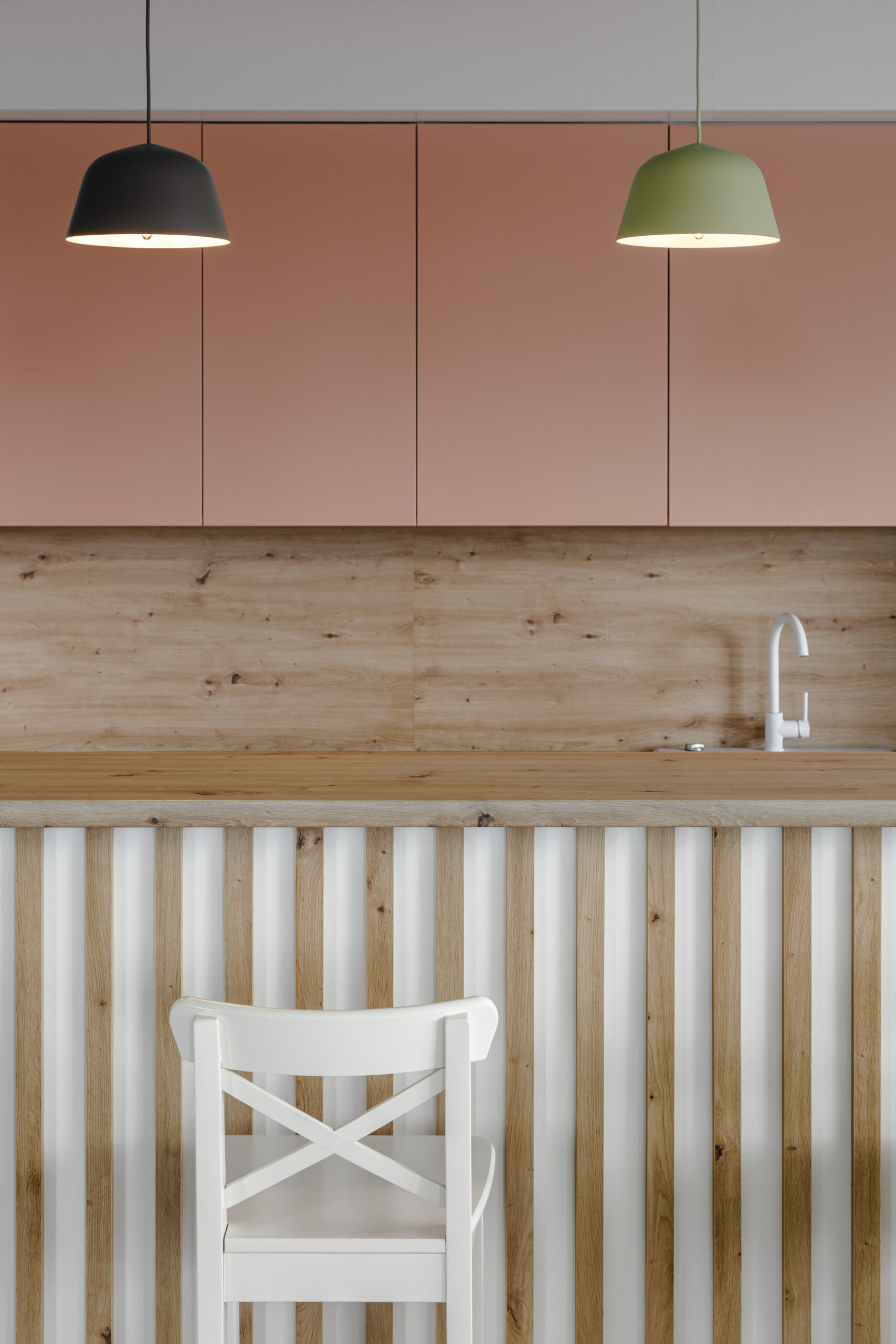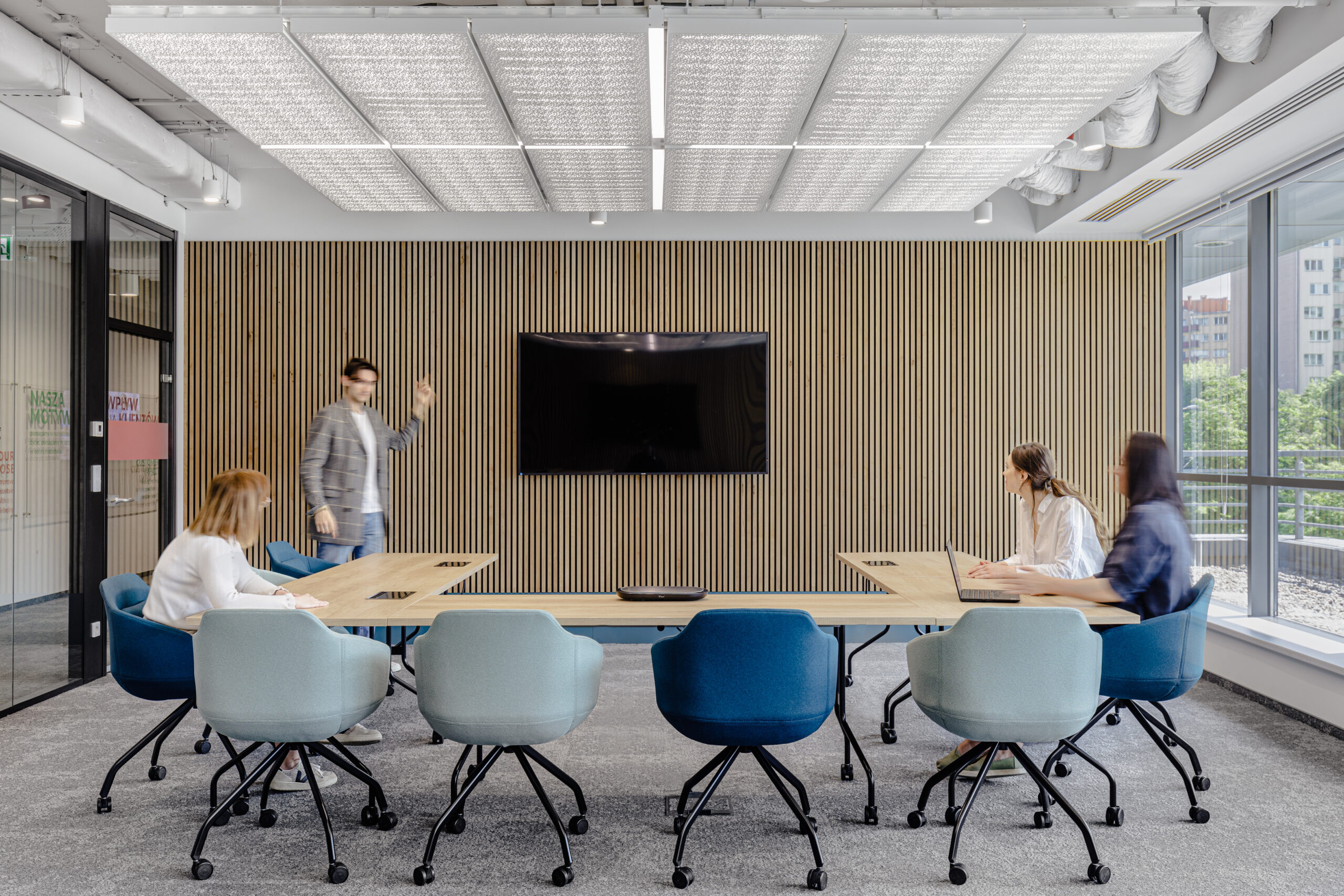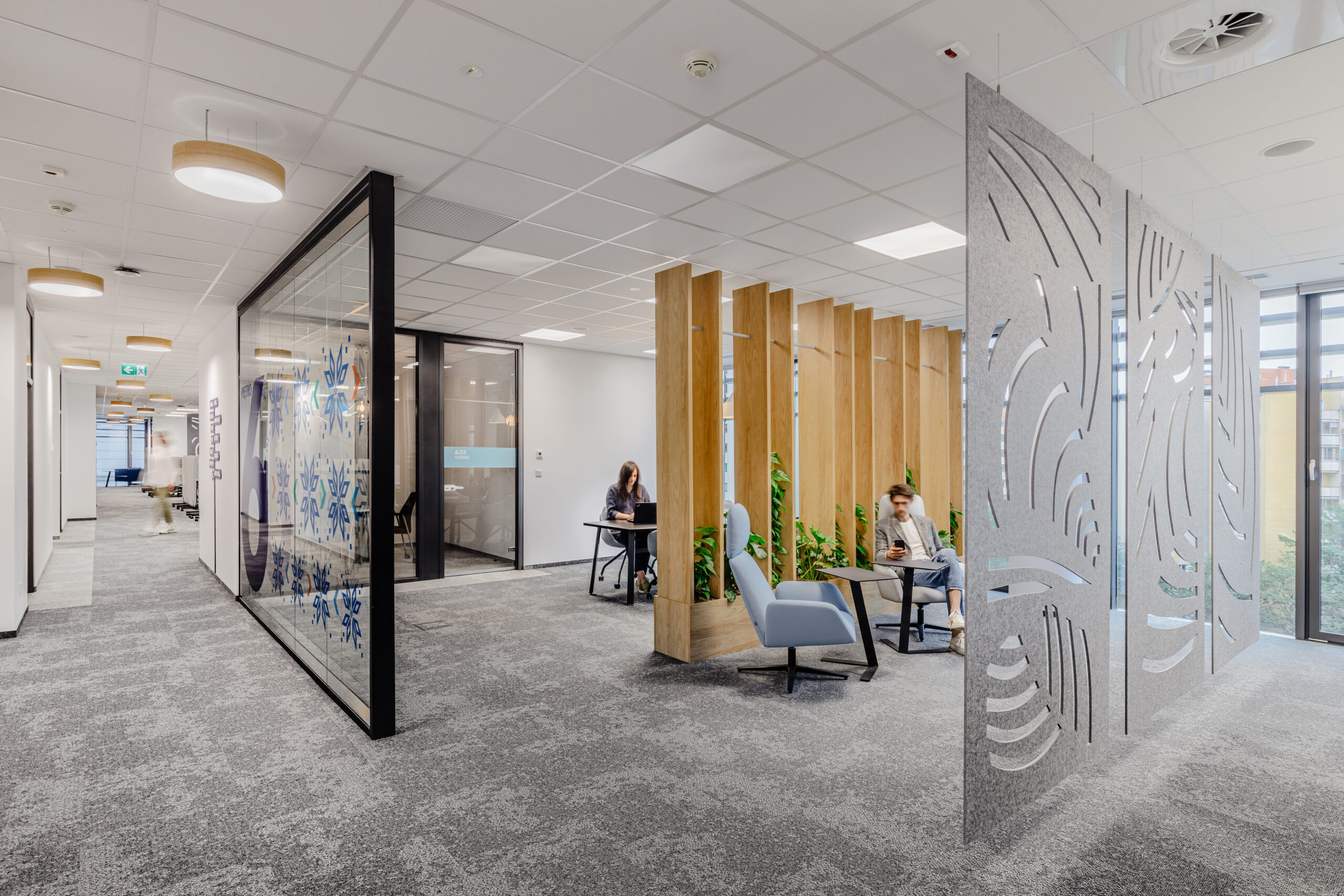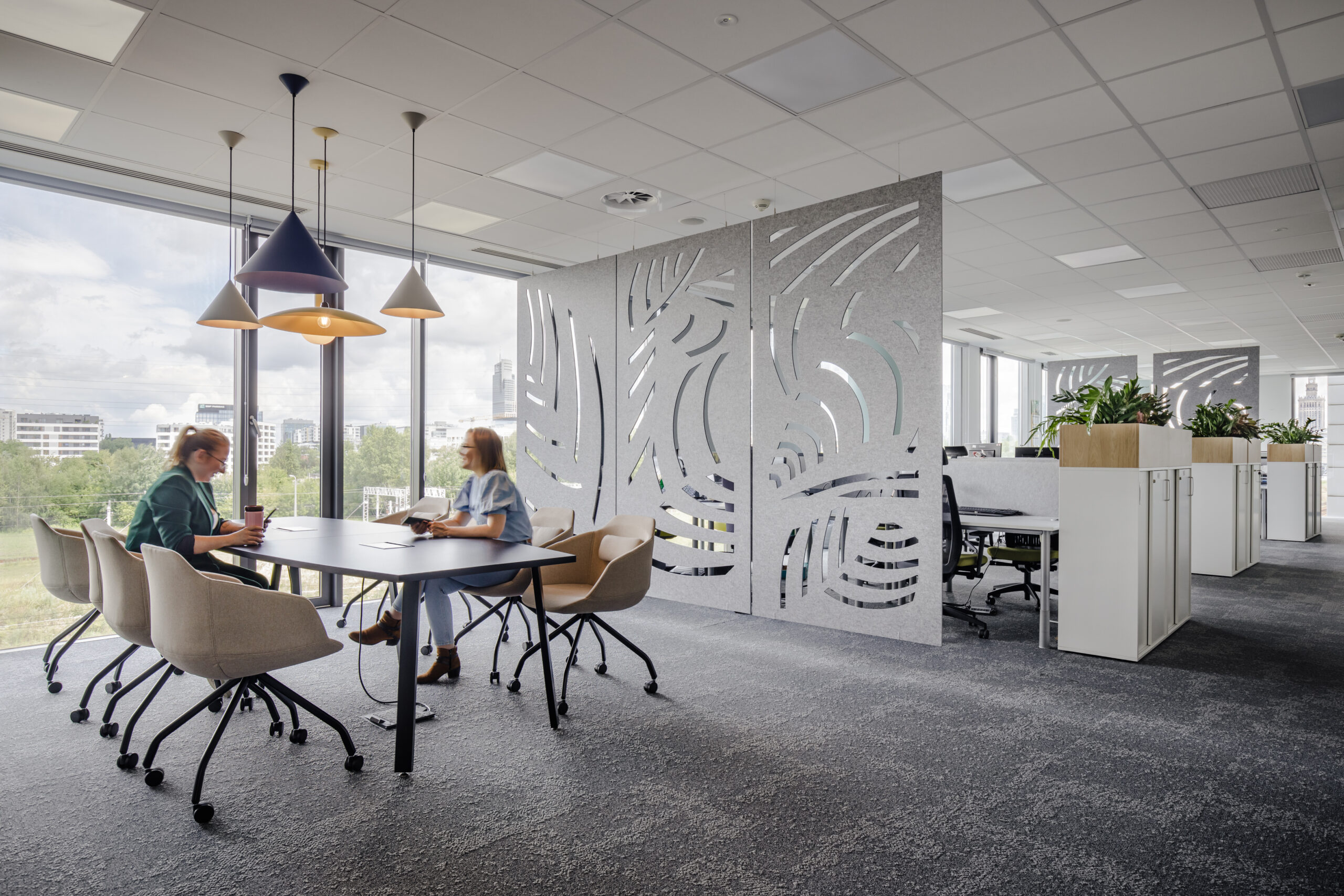Case study: Medicover | Our home, our planet
The company’s slogan “Our Home – Our Planet” obliges. Biophilic design and the use of solutions in the spirit of less waste, which are invisible at first glance, are the fundamentals of the Medicover’s headquarters transformation.
Our consultants and designers took the challenge of rearranging the work environment at the Medicover office. The main business objective was to create a more flexible space, tailored to the needs of individual departments and conducive to collaborative work and spontaneous meetings.
Project challenges:
- Creating a space that nurtures relationships within teams and stimulates their creativity
- Building a sense of closeness to nature and enhancing employee wellbeing
- Reusing design elements from the previous office
A few words about the Client
Medicover is one of the largest companies offering a wide range of services – from health to wellbeing. The organization started operating in Poland in 1995 and currently owns 26 hospitals in 12 countries. Medicover’s Warsaw headquarters occupies an area of approx. 6,000 square meters located on four floors in the Equator II building on Aleje Jerozolimskie Street.
The organization has struggled with adapting its functioning space to remote working. Before the transformation, Medicover’s office consisted of an open space stretching across entire floors and networks of narrow corridors. Along with the transition to a hybrid work model, there was a need to rearrange the interior to explore and accommodate the way individual teams work in the functional layout and create solutions that suited the company’s business strategy.
Today, the flexibility of the work model and letting employees decide where they want to perform their duties from is the most desirable approach among the workforce. This is also linked to the necessity of reorganizing the work environment and creating a space that meets the new needs.
How did we develop the project objectives?
The process of redesigning the space was preceded by a survey on employees’ desires and a work environment analysis, which provided us with an understanding of the organization’s needs and the nature of the work of individuals and departments. In the research and strategy stage, the consultants from People & Places Advisory team engaged managers and senior executives.
During the surveys, it became apparent that employees identify primarily with the need to care for the people and the planet – they chose the phrase “Our Home – Our Planet” as their motto. The concept of the Planet Earth and it’s changing seasons was selected as the main theme. The Client was eager for the office to be designed in the spirit of less waste, in accordance with the principles of circular economy.
Design for the planet, and for the people
It was the reuse of elements from the previous office that became one of the project’s biggest challenges. This did not entail that the new space should be a collection of random furniture and decomposed elements. Rather, the aesthetics and layout of each room had to be thought out and carefully planned – also in order to allow for the upcycling of such parts as walls and furniture. This is an expression of one of the pillars of the new space’s strategy – that is, care for the environment, as well as the health of the people who work in it.
It is being discussed more and more, including in the commercial real estate sector, that materials and raw resources are limited. Reusing them and implementing a circular economy model is one of our priorities nowadays. In the case of Medicover’s space, it was a conscious decision – we don’t throw out everything old and buy new furniture only to make the office shine.
Natural motifs and eco-friendly finishing materials are dominating the organization’s headquarters. At the heart of the interior transformation is biophilic design. This idea relies on establishing a sense of closeness to nature and improving the well-being of employees. The methodology is based not only on the introduction of plants into the interior design, but also on the natural handling of light, the use of sensory impressions, the creation of a variety of spaces and the use of materials whose production is not harmful to the environment.
Spatial solutions
The functional layout reflects the proportion between remote and office work – the number of places for individual and collaborative work is determined by the demand for these spaces. Fewer desks and workstations have appeared in the design compared to the previous arrangement, instead we have more places for work in focus. The design team planned them in spaces with natural access to light.
In reference to the sunlight shining through the leaves, Colliers Define architects proposed a perforated ceiling. This provides the opportunity to change the intensity of light, moderating the sensation and atmosphere of the room.
There is no shortage of places for relaxation, such as a Zen room, a green terrace, or a rest corner with a library where employees can exchange books. Great emphasis has been given to meeting and collaboration spaces, which, thanks to their openness and transparency, allow for rapid ad-hoc information sharing, improve team integration and sustain less formal relationships between employees.
Open spaces are separated by co-working areas with co-working tables, and kitchens on each floor have been arranged so that they encourage dialogue. The office becomes a place where people collaborate and build relationships.
A few words about recycling in office design
Although they are invisible at first glance, solutions in line with the idea of less waste were widely applied during the redesign of Medicover’s headquarters – the refreshed elements perfectly blended into the atmosphere of the new arrangement. Several hundred chairs were reupholstered, glass components were reused – out of more than four thousand items needed, only one glass door was purchased, and existing ceilings and installations were also recycled to the utmost.
Carpeting without bituminous underlays and linoleum was used, consisting of plant resins, which are less harmful to the environment in their production and disposal. The project also included materials derived from recycled raw ingredients – acoustic baffles made of felt from PET bottles. In addition to absorbing sound and improving acoustics, they act as visual and physical partitions that can be reconfigured in the future much more easily than traditional walls.
Since the theme was supposed to be Earth and the seasons, elements referring to this concept were incorporated in the common spaces of the various floors. Nomenclature relating to natural wonders from the countries where Medicover operates was introduced, as well as a color scheme alluding to the different seasons. At the same time, the aim was to create rooms pleasing to the senses – the kitchens, where employees meet and build relationships, became such places, with more intense sensations, colors and textures.
New reality
The implementation of less waste solutions presented a major challenge, but allowed the development of innovative design concepts and solutions. Medicover’s new office is an example of a change that not only has a positive impact on the users of the space, but also has a significantly lower negative environmental influence.
Through this new method of organizing the work environment adapted to the hybrid model, employees can perform different tasks and use the work areas best suited to their activities at any given time. This also increases the efficiency of space utilization.
Medicover’s new “home” responds to employees’ needs, fosters creativity and builds a sense of closeness to nature.
Authors
Workplace strategy:
Dorota Osiecka, Grzegorz Rajca
Interior concept and executive design:
Zuzanna Jaszczuk, Eliza Henger, Jan Szymuś, Aleksandra Adamczyk, Paweł Śniegowski
